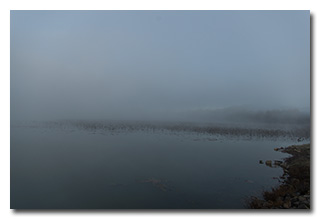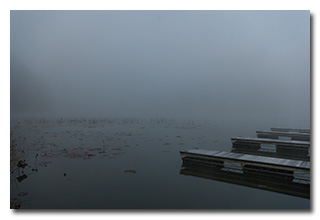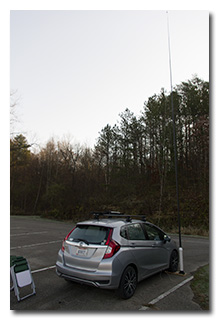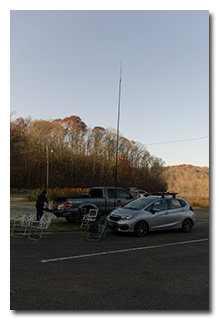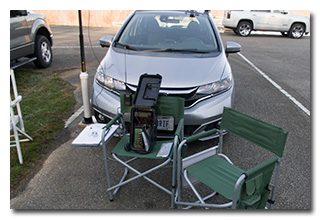
by William Eric McFadden
From the Burr Oak State Park website:
-
As one of Ohio's resort parks, Burr Oak State Park blends modern convenience with Ohio's wilderness spirit. Miles of forested ridges and hollows can be found here. The park offers a rustic full-service lodge with family suites and a cozy campground with easy access to the lake. A substantial trail system ranges from moderate to difficult with portions intersecting the statewide Buckeye Trail.
From the North Country Trail Association website:
-
The North Country National Scenic Trail is the longest in the National Trails System, stretching 4,800 miles across eight states from North Dakota to Vermont, traversing forests and farmlands, remote terrain and nearby communities. Whether you’re looking to day-hike a few miles or plan a longer overnight backpacking trip, a multitude of diverse landscapes and hiking opportunities are waiting for you.
From the Bobcat Trail Marathon website:
-
Prepare to immerse yourself in the rugged beauty of Burr Oak State Park at the Bobcat Trail Marathon & Half Marathon. This event offers a unique opportunity for trail running enthusiasts and hikers to experience the wild and challenging terrain of Ohio wilderness. The marathon’s single-loop course provides a diverse and scenic adventure, featuring rolling hills, several creek crossings, and portions of the Buckeye Trail. The half marathon offers an equally thrilling point-to-point experience on the same trails as the marathon.
This race is all about embracing the untamed beauty of Burr Oak – 90% of the course is pure trail! Whether you’re a seasoned trail runner, a hiker, or new to the trails, all are welcome and encouraged to come and experience the Bobcat adventure at your own pace. The Bobcat Trail Marathon & Half Marathon is your chance to get wild, be challenged, and reconnect with nature on an extraordinary course in one of Ohio’s most pristine state parks.
Description
On Veteran's Day, Saturday, November 11, 2023, two members of the Southeast Ohio Radio Adventure Team performed successful two-fer activations of Burr Oak State Park (K-1939) and North Country National Scenic Trail (K-4239) in Ohio as part of the Parks on the Air (POTA; link) program.
Eric McFadden, WD8RIF, and Jeff Slattery, N8SUZ, had each volunteered to serve as communicators for the annual Bobcat Trail Marathon and Half-Marathon trail-run. This event is run on trails within Burr Oak State Park, including the Buckeye Trail which is coincident with the North Country National Scenic Trail. Both operators were stationed at locations that were within Burr Oak State Park and within 100' of the North Country National Scenic Trail.
The weather was cold (36°) in the early morning but, with a promise of afternoon warming, it was actually a pretty nice day for an outdoor public-service communications event and POTA activations.
WD8RIF
Eric was assigned to work at Aid Station 7, which was located at Burr Oak State Park's Dock 3, and was the 21-mile point of the full marathon and the 8-mile point of the half-marathon.
Eric planned his arrival at Dock 3 to be a full hour prior to to his scheduled 9am on-station time, and he arrived at the entirely unoccupied Dock 3 area at 1245 UTC.
Eric quickly deployed his 28½' wire vertical on his 31' Jackite fiberglass telescoping mast supported on a drive-on base, set up his Elecraft KX3 inside his car, and was on-the-air at 1259 UTC.
Because Eric had never had cell-signal at Dock 3 in at least twelve years of supporting the Bobcat Trail Marathon at this location, prior to leaving home he had announced his POTA activation on POTA Spots (link) so that he would, he hoped, be automatically spotted on POTA Spots when he began his CW operation. However, upon his arrival at Dock 3, Eric found that he did have cell-signal. Unexpectedly, Eric would have POTA Spots available if to spot himself if he needed to, and would be able to use POTA Spots to identify park-to-park (P2P) QSO opportunities.
While keeping an ear on the Bobcat Trail Marathon 2m FM simplex net during the early portion of the marathon and half-marathon, Eric began his operation on 40m by finding himself a frequency to run and beginning to call CQ. He was quickly auto-spotted to POTA Spots and his first QSO came almost immediately at 1301 UTC with his good friend K4SWL in North Carolina. QSOs came very quickly, with Eric's twenty-third QSO coming at 1324 UTC with AE4FZ in North Carolina. This run included a two-fer P2P QSO with W9MIC at Seminole Ranch State Conservation Area (K-8370) and Florida Trail National Scenic Trail (K-4559) in Florida and QSOs with operators in North Carolina (2), Michigan (2), Missouri (2), Massachusetts, South Carolina, Georgia (2), Arkansas, Ohio (2), Florida (2), Pennsylvania (2), Minnesota, Illinois (2), Virginia (2), and Ontario.
Wanting to have his marathon-support station set up before the aid station staff arrived and well before the first runners arrived, following this excellent run, Eric finished his activation, dropped his antenna, and put away his KX3.
In all, Eric logged twenty-three QSOs, including two P2P QSOs. All of Eric's QSOs were CW and were made at five watts output.
For his part in the communications support of the Bobcat Trail Marathon, Eric used his 31' Jackite telescoping pole and drive-on base to support a halfwave 2m ground-independent mobile antenna and RG-8x feedline and deployed his IC-2100H Shack-in-a-box on a folding camp chair at the base of the mast.
Eric also submitted his log to the World Wide Flora and Fauna in Amateur Radio (WWFF; link) program for an operation at Burr Oak State Park, KFF-1939.
N8SUZ
Jeff Slattery, N8SUZ, supported the Bobcat Trail Marathon at the Burr Oak State Park Nature Center parking lot and he operated inside his warm van. Because Jeff was net-control for the event, he operated exclusively as a hunter during the twelve hours of the event, searching for activators during lull periods in the marathon 2m FM simplex communications net. (Since the net was simplex, he was also able to count QSOs with all eleven of the other operators supporting the event.)
In all, Jeff logged eleven 2m FM simplex QSOs, thirty-seven 40m SSB QSOs. All the 40m QSOs were P2P, and several were two-fer or three-fer activations.
(return)
